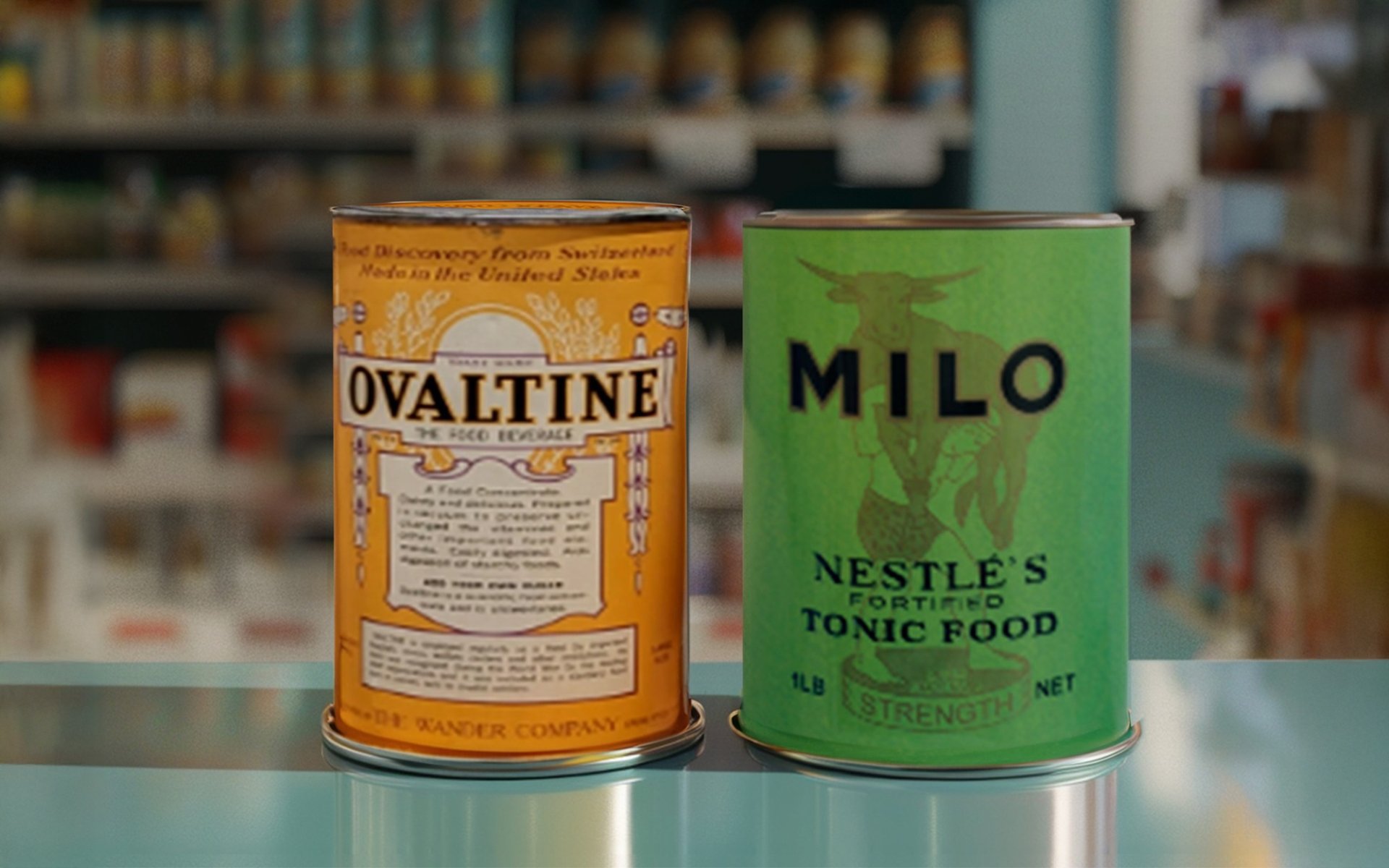Milo vs. Ovaltine

Looking back at childhood, many are surely familiar with chocolate malt beverages like Ovaltine and Milo. But undoubtedly, many wonder which of these two similar-looking brands originated first. Today, Rimping Supermarket is here to help you solve this mystery!
Ovaltine : The Swiss Pioneer (1904 AD)
The stories of Ovaltine and Milo both began in the 20th century, but the brand that appeared first was Ovaltine, originally named Ovomaltine. This name comes from the Latin word Ovum (meaning egg) and the word Malt.
Ovaltine was first produced in 1904 by Dr. Georg Wander, a chemist in Bern, Switzerland. The original formula contained malt, milk, and eggs. Later, eggs were removed from the recipe and replaced with cocoa powder, which Dr. Wander's son, Albert Wander, suggested adding to improve the taste, making the beverage popular with children.
Ovaltine was invented to provide complete nutrition for malnourished children, as severe child malnutrition was a significant problem in Switzerland at the time. Consequently, after its initial launch, Ovaltine became the most popular beverage in Switzerland. Initially, it was sold in pharmacies, as Ovaltine was classified as a medicinal food supplement.
In 1909, Ovaltine was introduced to England, but a registration error led to the brand name being misspelled as Ovaltine. However, this new name was easier to pronounce and more memorable than the old one, so the company decided to use Ovaltine as the product name in the English market. (Currently, in the UK, America, Australia, most of Asia, including Thailand, this malt beverage is also known as Ovaltine.)
In 1915, Ovaltine was introduced to the United States and quickly gained popularity because there were very few food supplement brands available at that time. Ovaltine built its brand on the concept of promoting overall health and well-being, attracting a wide range of consumers, both children and adults.
In the US, Ovaltine also became known through modern marketing strategies, often advertised via posters or radio commercials. Its first radio broadcasts were on Little Orphan Annie and Captain Midnight, two of the biggest radio shows in America at that time.
Milo: From Australia, Fueling Athletes (1934 AD)
Now, on to the story of Milo...
Milo was developed by Thomas Mayne, a food scientist working for Nestlé Australia, in 1934 in Smithtown, New South Wales, Australia. It was created during the Great Depression as a cost-effective nutritional supplement for children.
Milo is rich in various vitamins and minerals, including Vitamins B, C, D, calcium, iron, phosphorus, and complex carbohydrates, all contributing to sustained energy levels. Its main ingredients include malted barley, milk powder, sugar, and cocoa.
Milo was named after Milo of Croton, an ancient Greek wrestler known as the strongest man on earth, renowned for his immense strength and power. Since Milo's aim was to support sports, its marketing strategy focused specifically on athletes, both children and adults. It was officially launched at the Sydney Royal Easter Show in 1934 and quickly gained popularity.
Milo often supports school sports activities worldwide to promote healthy children through Milo trucks, also known as Milo in schools. These trucks provide free Milo drinks at various events. Today, Milo continues to support children in this way, becoming a cultural phenomenon.
Additionally, the brand's goal is stated as: Milos purpose is to energize with delicious taste, complete with beneficial nutrients, while supporting children to succeed at every step of their lives.


